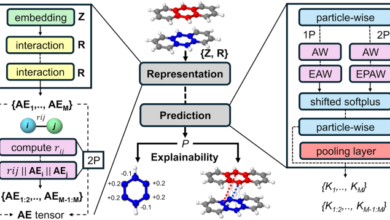VA looking at AI tools to reduce workforce burdens, anticipate veterans’ needs

The Department of Veterans Affairs is looking at artificial intelligence tools to prevent burnout among its employees.
The VA last week concluded a 90-day AI Tech Sprint. The department recognized six finalist teams — out of 150 teams that participated in the pilot — for projects focused on reducing administrative burdens for employees.
The projects include “ambient dictation,” or AI-powered note-taking that would take place during and after a veteran’s appointment with a VA clinician.
The department also highlighted AI tools that can automatically summarize hundreds of pages of outside medical records anytime a veteran comes into a VA clinic for the first time.
Kaeli Yuen, AI product lead for VA’s Office of the Chief Technology Officer, said the ambient dictation tool records a veteran’s appointment with a medical provider, and summarizes the appointment as a note for the provider to input into the EHR.
“Every time they have an interaction with the patient, they have to document it in the electronic health record. This is causing high levels of burnout, and is also kind of using a lot of time,” Yuen said at a panel discussion Wednesday hosted by ACT-IAC.
Yuen said the ambient dictation tool doesn’t provide a direct transcription of the patient’s appointment, and isn’t used for clinical decision-making.
The physician is required to review the AI-generative summary and sign off on it, as well as make any edits that are required.
Susan Kirsh, deputy undersecretary for health for discovery education and affiliated networks, said the ambient dictation tool is meant to give clinicians more time treating patients, and less time taking notes behind a computer screen.
“We want to spend all of our time taking care of the patient, and the documentation, over the years, has gotten to be pretty high,” Kirsh said.
Denise Kitts, executive director of VA’s Veterans Experience Office, said she sees AI tools as the key to providing a higher level of customer experience to veterans, as well as “putting actionable data in front of people that are making decisions.”
“Surveys are great, but it’s a lagging indicator,” Kitts said. “From a data perspective, we’re pivoting and we’re really looking at all the data the VA has. In our minds, all data is CX data, so how do we pull that data together, so we can build the predictive models and move from being reactive, from a customer experience perspective, and being much more predictive, and even prescriptive, and tailoring that experience.”
Kitts said the VA built an AI model on operational and clinical data — such as the last time a veteran came into the VA for an appointment, and if there were any “no-show” appointments.
“We modeled it until we could get much more predictive, in terms of, who are the people that medical [centers] really need to reach out to and make sure they stay tethered?” Kitts said. “That’s an example of using all our data to predict who are the people that we really need to do outreach to.”
Yuen said the VA is also experimenting with generative AI to tackle administrative burdens.
“There’s a lot of excitement around these tools. Folks from all over VA are coming to our office, asking if they can pilot a generative AI to do things like write emails, summarize policy documents, draft contracting packages, and summarize veteran user experience survey data. People from all over VA want this,” Yuen said.
As VA’s Office of Information and Technology launches generative AI pilots, Yuen said the team is rethinking success metrics.
“How are we going to know if this pilot was successful? Should we expand it? Should be invest in it more? And I think this is one area we’re struggling a little bit,” she said. “We tend to land on time saved — it used to take us 10 hours to analyze a survey, now it takes us two hours to analyze the survey. But I feel like there’s something more we’re leaving on the table here. What we’re doing is applying the tools to a process that is built without those tools in mind, and maybe there’s a different way we should be doing things.”
Copyright
© 2024 Federal News Network. All rights reserved. This website is not intended for users located within the European Economic Area.



